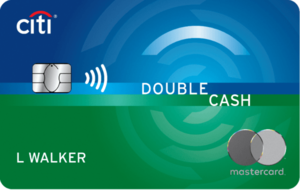Opinions, reviews, analyses & recommendations are the author’s alone, and have not been reviewed, endorsed or approved by any of these entities.
If you’re feeling stuck paying high credit card interest rates, a balance transfer credit card may help.
Here’s how it works: once you are approved for the account, you transfer your balances to the card (usually, you’ll pay a fee based on the balance you transfer), and work towards paying as much of your balance before the introductory rate ends. An ideal balance transfer card comes with a 0% APR for 6 – 12 or even 18 months, giving you time to make some headway against your debt balance.
Balance transfer credit cards are a great way to save money on interest, consolidate your debt onto one card, and possibly even increase your credit score by paying off your other credit card balances. Before you jump into just any balance transfer credit card, though, you should know what to look for in a card.
Here are our top choices for balance transfer credit cards available today.
Capital One Quicksilver
Capital One’s Quicksilver card offers a 0% APR for 15 months on balance transfers and purchases with no annual fee. After the 15 months, the APR will increase according to your credit rating.

What’s great about the Capital One Quicksilver card is its unlimited cashback bonus. You earn 1.5% cashback on every purchase. You don’t have to worry about category-specific rates or spending a certain amount of money. You can take your cashback at any time and in any increment – plus, your rewards never expire.
On a balance transfer, you’ll pay 3% of the amount transferred. If you spend $500 in the first three months of having the card, you’ll also receive a $150 early spend bonus, which will offset the fee you pay on up to $5,000 in balance transfer fees. Travelers will enjoy the fact that the Quicksilver card doesn’t charge foreign transaction fees. The Capital One Quicksilver card does require excellent credit.
For more information on how to apply click here
Citi Simplicity
The Citi Simplicity card offers a 0% APR for a full 21 months on balance transfers and 12 months on purchases. After the introductory rate, the interest rate increases according to your credit rating.

The Citi Simplicity card also provides a no late fee guarantee – so even if you pay your bill late, you don’t pay fees or interest rate penalties (though your balance will continue to accrue).
While it’s not a card with a lot of features, it does help limit the cost of having the card. There’s no annual fee, and the cost to transfer a balance is 5% of the balance transferred, which is on the high end for a balance transfer.
In addition to its card benefits, Citi card offers 24/7 customer service and $0 liability on fraudulent charges. You can choose the due date that fits your budget, but you do need good credit to qualify for the card.
Citi Double Cash Card
Citi's Double Cash Card offers a 0% APR for 18 months, with a 3% balance transfer fee. After the 18 months, the APR varies depending on your credit score.

The Citi Double Cash Card offers members up to 2% back on each purchase you make, but there’s a catch. You earn 1% for each purchase, with no limit. You can then receive another 1% back when you pay for the purchase. All you have to do is make the minimum payment each month to earn the bonus.
Thre is no annual fee, and you must complete balance transfers within four months of getting the card to get the 0% APR. Citi doesn’t have any specific categories to get the cashback, and the rewards are unlimited.
There’s 24/7 customer service and $0 liability for fraudulent charges.
Choosing the Right Balance Transfer Credit Card
It’s important you know what to look for when choosing among the balance transfer credit cards. First, you must figure out which cards you are eligible to obtain. Our three examples above all require good to excellent credit. Most balance transfer credit cards with 0% APR options have this requirement.
Beyond the credit score, you should look at the benefits and fees of each card.
- Compare the fees – Calculate how much it will cost you to transfer your balances. 3% - 5% of the amount transferred is standard, but always pay attention to the fine print.
- Compare the APR – Don’t focus on the 0% APR unless you know you can pay the balance off in full within that time. Figure out how much you can afford to pay each month and determine if you will pay the balance off in full before the balance transfer APR expires. If you can’t, you want the card with the lowest APR after the introductory period.
- Compare the cashback options – If you’re going to use a credit card, you must consider the benefits. Pay close attention to the categories required, if any, as well as the limits to the rewards. Think about what types of rewards you would use and choose your card accordingly.
- Look at the fees – Some cashback and balance transfer credit cards charge an annual fee. Know the amount of this fee and decide if it’s worth it.
If you are paying a lot in credit card interest, it’s time to consider transferring your balances. Make sure that you’ll save enough money to cover the balance transfer fees and that you’ll be able to pay most, if not all, of the debt off before the introductory period ends.
Pay close attention to the introductory period, as they vary from card to card, and ideally choose the period that you know you’ll be able to pay the balance off in full to get the full benefit out of transferring a balance.
Lavish Green has partnered with CardRatings for our coverage of credit card products. Lavish Green and CardRatings may receive a commission from card issuers.






